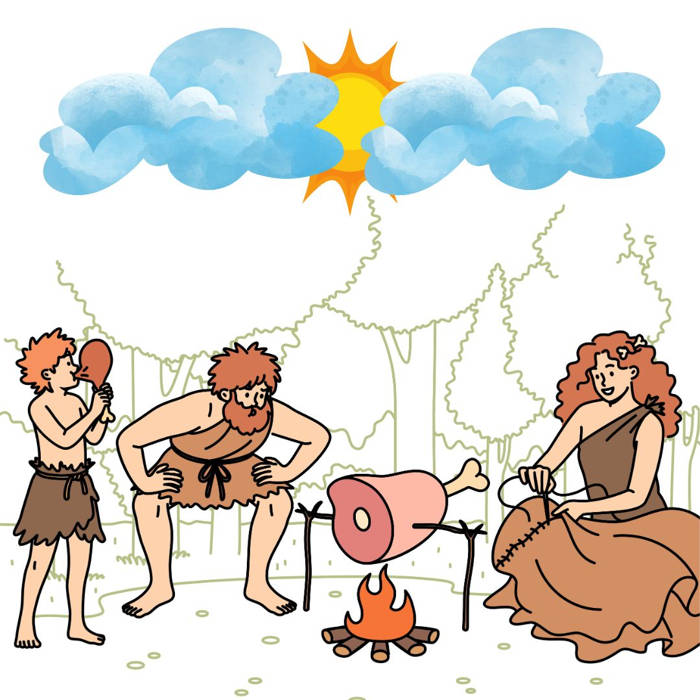
Why the Paleolithic Matters
Imagine a time long before written records, when early humans—hunting, gathering, creating tools, and expressing themselves through art—shaped the foundations of humanity. That’s the Paleolithic, or Old Stone Age, spanning roughly 2.5 million years ago to about 10,000 BC. It marks our earliest steps toward becoming who we are today.
What Was the Paleolithic Period?
The Stone Age, which includes the Paleolithic, Mesolithic, and Neolithic periods, is defined by humanity’s development of stone tools. The Paleolithic is the longest of these and marks the earliest known human cultural stage. It begins with the first stone tools—over 3 million years ago—and extends to around 11,700 years ago, right before the Holocene Epoch began.
Why it matters:
- It covers the emergence of toolmaking, hominization (rise of early humans), art, culture, and survival strategies.
- The conditions of the Pleistocene Epoch—the Ice Ages—shaped environmental pressures that drove adaptation.
Emergence of Humans: Hominization
This long epoch witnessed the gradual evolution of hominins into Homo sapiens. The very earliest stone tools—dating back 3.3 million years—may not have been made by our genus, but rather by Australopithecus afarensis or related species WikipediaAncientCraft.
- Oldowan toolkit (≈ 2.9–1.7 million years ago) includes simple pebble tools, core flakes, choppers—used by species like Homo habilis and H. ergaster.
- Around 1.8–1.65 million years ago, the more refined Acheulean hand-axes emerged, a hallmark of Homo ergaster and Homo erectus.
These developments show how hominins began mastering materials and devising increasingly intentional, functional designs.
Nomadic Life, Foraging, and Survival
Nomadic Bands & Hunting-Gathering
Paleolithic humans were largely nomadic hunter-gatherers, moving seasonally to exploit changing resources. Their survival strategy relied on:
- Hunting wild animals
- Gathering edible plants, nuts, roots
- Using natural shelters—caves, rock overhangs, and early constructed dwellings.
Shelters & Social Life
While caves are the most famous, most groups would have lived in temporary shelters—like huts made of wood, animal hides, or bones. For example:
- In Nice (Terra Amata), some wood-and-stone huts from the Lower Paleolithic have been identified, where hearths provided warmth.
- The famous Schöningen spears (≈ 380,000–400,000 years ago) show crafted wooden weapons and evidence of coordinated hunting on a large scale.
Life was communal, practical, and adaptable—a constant dance between environment and survival.
The Tools That Shaped Us: Lithic Technology
A Journey Through Stone Ages
Paleolithic tool-making evolves remarkably over these millennia:
Lower Paleolithic
- Oldowan tools: simple yet revolutionary (choppers, flakes).
- Acheulean hand-axes: bifacially made, symmetry and planning evident.
Middle Paleolithic
- Mousterian industry, including the sophisticated Levallois technique—a form of prepared core knapping that produced intentionally shaped flakes or points.
Upper Paleolithic (Later Stone Age)
- A leap in creativity and efficiency: tools made of bone, ivory, and refined stone, such as burins, harpoons, needles, blade tools, and microliths.
- These innovations coincide with symbolic behaviors—art, adornment, and social identity.
Why it’s Fascinating
This progression from basic choppers to finely crafted multi-material tools reflects evolving cognition, planning, and cultural identity.
Paleolithic Art & Beliefs
While tools tell how people lived, art and symbolic behavior hint at what they thought, felt, and believed.
Decorations & Early Symbolism
- The earliest evidence of artistic behavior isn’t cave painting—it’s body decoration: ochre use, beads, ochre-painted items, patterns like zig-zags and cross-hatches.
- Even Neanderthals used pigments—manganese, ochre, charcoal—perhaps for decoration or camouflage, dating back at least 60,000 years.
Artifacts & Proto-Art
- Objects like the Venus of Tan-Tan or Berekhat Ram, or engraved pebbles, may represent early figurative shapes—but their status as intentional art is still debated.
Upper Paleolithic Art: Cave Paintings & Portable Art
- From ~30,000 years ago, we have vivid, deliberate cave paintings, figurines, and ornaments—depicting animals, human forms, and perhaps spiritual motifs.
- Gravettian culture (≈ 28,000–27,000 BP) brought fertility Venus figurines, jewelry, burials with ornaments, and more complex art—pointing to symbolic rituals and social ties.
Interpreting Beliefs & Religion
- Some scholars suggest cave art reflects religious iconography: powerful animals depicted where their spiritual significance transcends pure hunting scenes.
- Others caution against over-interpretation; what appears to be ritualistic may simply represent what mattered most—familiar, potent animals and forms.
- Animistic beliefs—seeing animals as spirit-beings, interconnected with humans—are also widely proposed.
Complex Symbolism & Cognitive Leap
- The capacity to create art separate from body decoration signals a major cognitive shift: the ability to use the "mind's eye" to envision abstract forms, narratives, and symbols.
Why the Paleolithic Captivates Us
- Foundations of Humanity
This era shapes everything that follows: toolmaking, social bonds, creativity, belief systems. - Human Innovation
From simple flakes to multi-part tools and symbolic art, it’s a testament to lifelong adaptation and ingenuity. - Story of Us
Through bones, shelters, tools, and cave walls, we connect with our ancestors in profoundly human ways.
What the Paleolithic Teaches Us
- Adaptation: Life in harsh ancient climates demanded innovation—tools, shelters, teamwork.
- Creativity & Symbolism: Art began as decoration, grew into symbols, and eventually storytelling.
- Emergence of Culture: From body paint to figurines and cave paintings, humans developed not just technology—but culture and meaning.
The Paleolithic is more than a timeline—it’s the story of becoming human.

